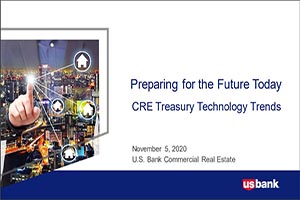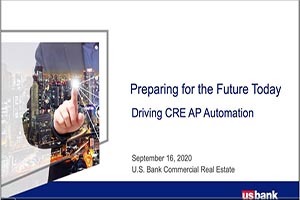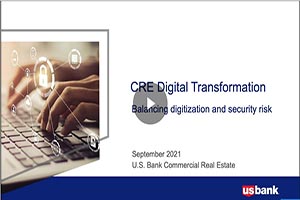Preparing for your transition
The first, and most important, step when preparing to convert to a new custodian is to review the contracts and agreements you have with your current custodian. These documents may include stipulations that impact the timing and process of moving your relationship to a new service provider.
It may be advisable to involve your legal counsel in reviewing these documents before you begin a transition. This will help ensure your new custodian won’t have to delay your conversion due to contractual issues. Another way of preempting delays is to provide sufficient notification for terminating your agreement and services.
After reviewing your contracts, you should collect any information needed to transfer your assets, including producing a list of all securities held in your accounts so that your potential provider understands the securities processing requirements of your portfolio. Providing full transparency of portfolio holdings between domestic and foreign securities in public and private market assists the custodian in preparing a competitive pricing proposal and comprehensive service offering.
There are multiple regulations and due diligence obligations imposed by the U.S. government on financial institutions that require the collection of certain information from organizations and individuals that custodians serve. These regulations include Anti-Money Laundering (AML) laws, the Bank Secrecy Act (BSA) and the Know Your Customer (KYC) guidelines, among many more. You shouldn’t have to worry about these; a proactive custodian will be aware of all of the federal regulations with which they must comply. They’ll clearly communicate what information they’ll need to gather from you throughout the conversion process.
Your new custodian should provide guidance and detailed instructions regarding data collection, forms and documents to make the process as straightforward and seamless as possible.
It may also be helpful to spend some time thinking about what you and your organization truly want from a new custodian. Identify your reasons for converting, then, be sure to make those reasons known to the new custodian at the outset of the transition process. This will help ensure the custodian creates a conversion plan that prioritizes the implementation of the products and services that are most important to you. A good relationship starts with open dialogue on service needs.
Before the conversion process gets underway, your dedicated conversion team should provide you with a conversion timeline and plan (and scheduled calls with your prior custodian, as necessary) depending on the complexity of your account needs.
What to expect from the conversion process
At U.S. Bank, we have a dedicated service team – a relationship manager (RM) and an account manager (AM) – that’s fully involved in managing the relationship through the conversion period and beyond. They’re also involved with communicating and coordinating with a dedicated conversion team (CTT) who is focused on getting the accounts open and assets transferred without service disruption. We also have a dedicated benefit payment team to ensure accuracy and continuity of pensioner payments.
- RM/CTT coordination/communication with prior custodian so client can focus on their business.
- No disruption of investment management or to pension payments (if applicable).
An experienced custodian will handle the majority of the work involved in the conversion process. Once you’ve been introduced to the personnel who will be handling your conversion, they’ll guide you through each step in the process until your transition is complete. You should share the information you prepared during the initial stages of the conversion, as the new custodian will need this to successfully transfer your assets. While there may be new account forms that you are required to fill out, the dedicated RM should assist you in completing them quickly and accurately.
Many custodians also initiate the contract drafting and signing procedures at the beginning of the conversion. This is because the custody agreement and any other necessary agreements and documents will need to be in place before your assets can be transferred. This is often the component of the conversion that requires the greatest dedication of time from the client. Here are some factors that can help ensure this phase moves smoothly and efficiently:
- Alert your legal team or attorney to these incoming documents.
- Communicate the status of the contracts to the personnel in your organization who must sign off on the agreements.
- U.S. Bank has in-house legal staff, which means we don’t have to outsource legal counsel.
Once the required information has been gathered and the agreements are in place, you should be able to dictate your level of involvement. There is always a chance that something is discovered during the conversion that will require your attention, but this can be addressed on a case-by-case basis. A proficient custodian will keep you updated throughout the rest of the process according to your preferences. This may involve scheduling weekly update calls or simply sending email updates on relevant items, allowing you to participate at the level you prefer.
The time it takes to complete a custodian conversion will vary based on several factors, including the size and complexity of your portfolio. With the proper preparation and responsiveness from all parties involved, you can successfully convert to a new custodian in a matter of weeks.
- The custodian coordinates with 3rd party vendors and providers (e.g., investment managers, consultants, data providers and administrators of benefit payment services).
The importance of dedicated resources
When evaluating potential new custodians, it is critical to consider the resources the custodian will make available to you both during the transition and post-conversion. This is particularly important when transitioning a large or complex portfolio. When a conversion involves multiple professionals, departments and parties from both the client and the custodian, it can be easy for critical tasks to fall through the cracks and delay the conversion. A dedicated conversion team will manage the overall transition and keep all parties accountable for their assigned tasks. This way, you can rest assured that the conversion will progress smoothly and according to schedule.
Additionally, working with a dedicated point of contact or conversion team allows the custodian to become familiar with your organization and your unique requirements. This helps ensure that the right products and services are implemented at the outset. It also mitigates confusion or last-minute changes that are sometimes necessary when new client information or requirements are uncovered later in the conversion process.
Having access to dedicated conversion resources also helps ensure that any questions or concerns you have during the transition will be addressed in a timely fashion. The amount of new information and direction you receive during a conversion can be overwhelming. It can be frustrating if you are passed around to various employees or departments when trying to get your questions or concerns answered. With a dedicated conversion contact, you will have one central person to reach out to for process updates and information. This will help you keep your focus where it belongs – on your organization and your day-to-day business.
Conclusion
Transitioning to a new custodian should be a simple and efficient process, and it shouldn’t be burdensome to you or your organization. By dedicating time prior to the transition to review your current legal contracts, gather basic organizational and financial information, and outline your requirements for a new custody provider, you can set your company up for success.
At U.S. Bank, we prioritize seamless delivery of our products and services so that you can focus on achieving your goals. We also take pride in our ability to hold almost any asset type and to charge, appropriate fees for the work associated with various asset classes and security types.
Whether you’re currently weighing your custody options or looking for additional products and solutions, you’ll benefit from our broad resources, our deep expertise and our expansive service capabilities.
To learn more about the custody services we offer at U.S. Bank, contact us or visit our website.





























































































